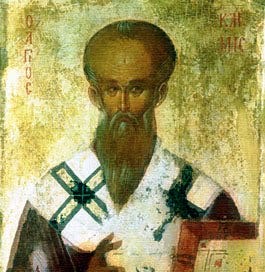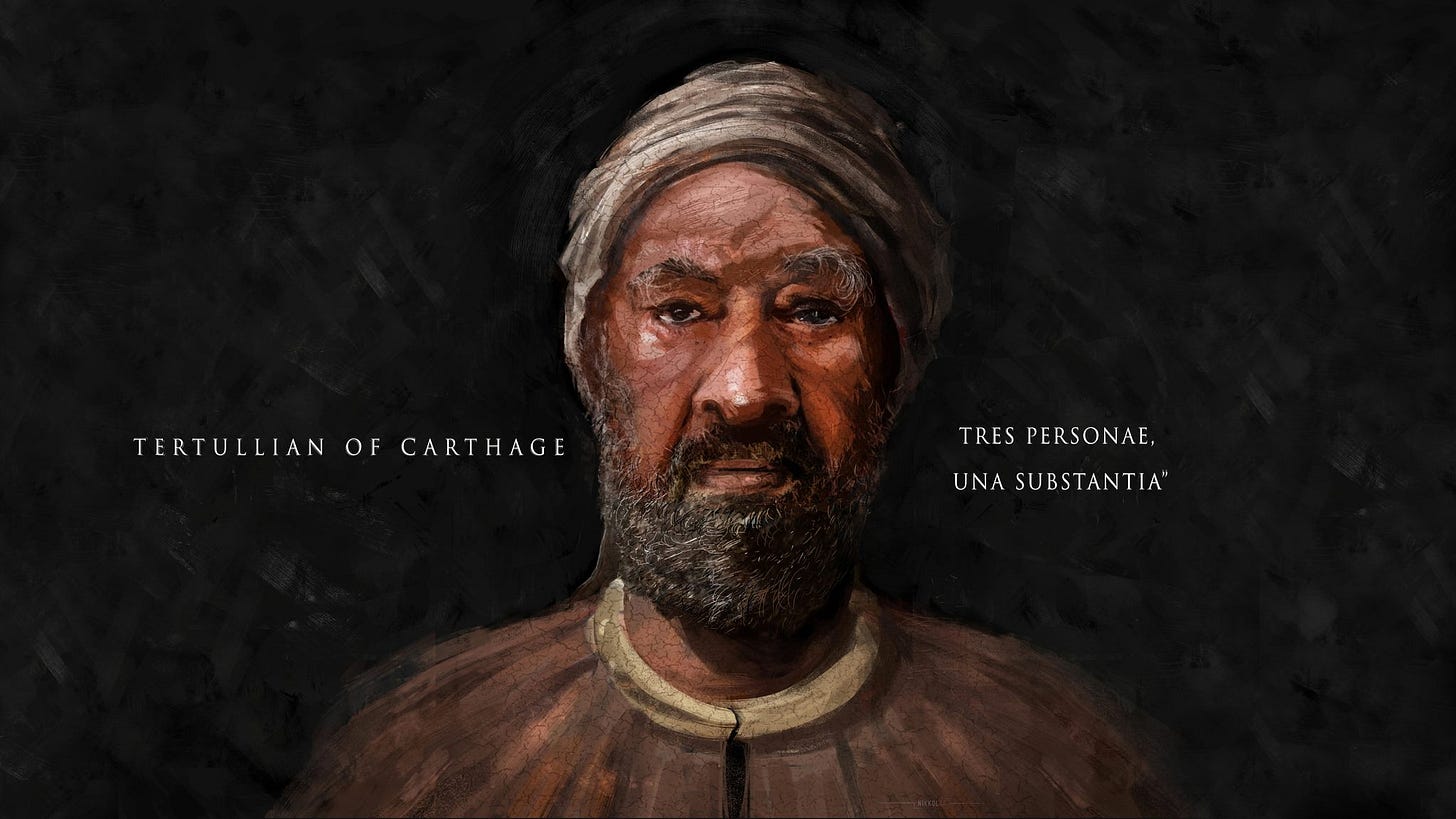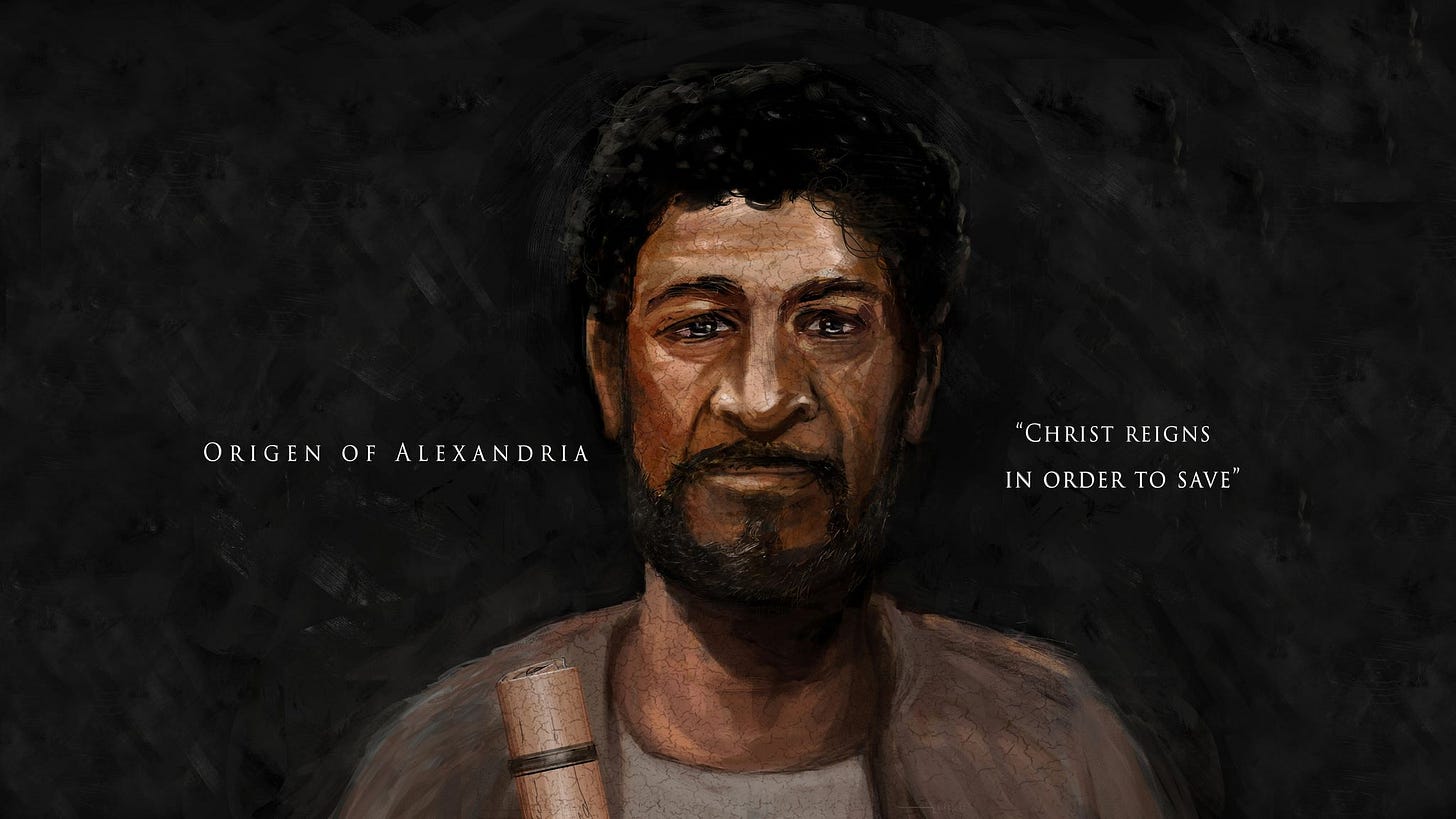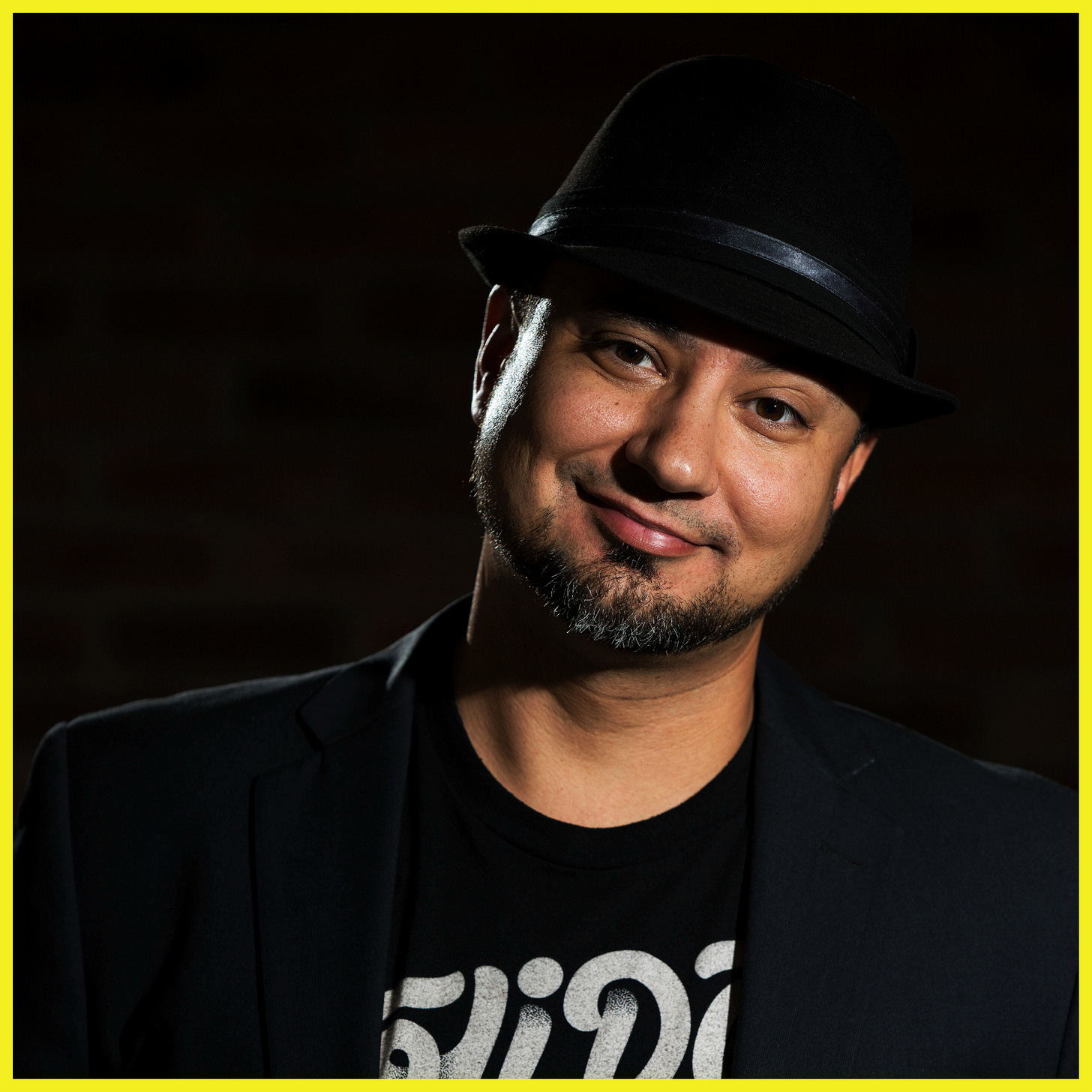Early African Christianity & the Holy Trinity
The biblical Christian doctrine of the Trinity and early North African Church. Ante-Nicene & Post-Nicene African Christians on the Trinity: Clement, Tertullian, Origen, Athanasius & Augustine.
The first Christian catechetical school was in North Africa. The catechetical school of Alexandria in Egypt was founded around 179-180 AD. The first teacher at the school was Pantaenus, a convert from Stoicism (died circa 216 AD). Pantaenus was dubbed the “Sicilian Bee” (Stromata 1.1) by his most well-known student, who was a Christian who lived in Africa: Clement of Alexandria.
CLEMENT OF ALEXANDRIA (ca. 15-215 AD)
Early Christianity was incredibly diverse. A snapshot into Clement of Alexandria’s life is illustrative of this truth.
In the beginning of Clement’s Stromata, he tells readers he is partially writing so he won’t forget what he was taught. Then, he mentions some of the Christian mentors who poured knowledge into him. He speaks of “animated discourses which I was privileged to hear, and of blessed and truly remarkable men.” Most interesting, Clement speaks briefly about these remarkable men and their places of origin:
Of these the one, in Greece, an Ionic; the other in Magan Graecia: the first of these from Coele-Syria, the second from Egypt, and others in the East. The one was born in the land of Assyria, and the other a Hebrew in Palestine. (ibid.)
Clement he had mentors from Greece (an Ionic), Southern Italy (Magan Graecia), Syria (Coele-Syria, which also included parts of modern Lebanon and Israel), Egypt, Iraq (Assyria), and Israel (Hebrew in Palestine). What a truly diverse array of characters! Additionally, we know Clement left Alexandria and headed to Jerusalem, Israel, until his death around 215 AD.
TERTULLIAN (ca. 155-160 AD, ca. 220-240 AD)
Tertullian, possibly the son of a Roman soldier, was said to have been born around 160 AD, and was thought to have died after a long life.
Traditionally, it was thought he practiced law in Rome. There is evidence the biographical material handed down to us by Eusebius and Jerome that is accurate but these traditional biographical details have been called into question by some. Some scholars now argue he was not a legal expert (jurist) but rather a trained rhetorician who argued cases (advocate). (See Barnes, Timothy David, Tertullian: A Historical and Literary Study, (London: Oxford, 1985 and Rankin, David Ivan, 1997. “Was Tertullian a Jurist?” Studia Patristica, 31, 335-342).
Regardless, Tertullian left paganism, converted to Christianity, and may have become a presbyter in Carthage (near modern Tunis) in what is now Tunisia in North Africa. Tertullian was the first Christian author (whose work we have) who wrote a treatise about the Trinity. His work on the Trinity laid the groundwork for almost all subsequent discussions on the Trinity. His well-known definition of the doctrine of the Trinity is as follows:
All of them are One, by unity of substance; while we still keep the mystery of the distribution which spreads the Unity into a Trinity, placing in their order the three persons—the Father, the Son, and the Holy Spirit. But they are three, not in state, but in degree; not in substance, but in form; not in power, but in appearance; yet of one substance, and of one state, and of one power, inasmuch as he is one God, from whom these degrees and forms and appearances are understood, under the name of the Father, and of the Son, and of the Holy Spirit. (Against Praxeas 2)
Tertullian, writing in Latin, applied the word trinitas to God for the first time. Tertullian is also the first early Christian writer to speak of the members of the Trinity as persons. According to Charles Lowry, the established technical usage of person is “a permanent, individual mode or manner of Divine existence” and substance is usually defined as “a concrete being, including both the sum of attributes and the unique principle of individuality.” (See Lowry Charles W., The Trinity and Christian Devotion, (New York: Harper and Brothers, 1946), 81-82).
Tertullian was also the first to speak of the their (Father, Son, Spirit) unity as “substance.” Christian theologians still rightfully use this terminology today. Substance (substantia in Latin) refers to the essential qualities of a thing.
In Tertullian, the essence is, in fact, the Father. The Son and Spirit have the Father in them as that essence; just as you and I share humanness.
By the same token, for Tertullian, the Father flows through the Son and Spirit, who we experience in our world. So that's why Jesus says, "When you've seen me you've seen the Father." It would be like me saying, "When you've seen me, you've seen humanness." I exemplify it.
I am indebted to Moody Bible Inst. Professor Sanjay Merchant for providing the “essence” of this explanatory footnote.
When Tertullian writes the three persons share “substance,” he suggests a very intimate relationship between Father, Son, and Holy Spirit. The one being who is God is comprised of three persons—and these three persons share everything in common: “of one substance, and of one state, and of one power, inasmuch as he is one God.” (54 Toon, Peter, Spiceland, James D. Eds., One God in Trinity: An Analysis of the Primary Dogma of Christianity, (Westchester: Cornerstone Books, 1980), 58. 315)
Tertullian was a bold thinker. This can be seen in the imagery he draws from to argue for the possibility of the Trinity:
I should not hesitate to call the tree the son or offspring of the root, and the river the son of the fountain, and the ray the son of the sun; because every original source is a parent, and everything which comes from the origin is an offspring. And this is even more true of the word of God, who is actually called Son as his own name. But still the tree is not severed from the root, nor the river from the fountain, nor the ray from the sun; nor, indeed, is the Word separated from God. … Now the Spirit is third from God and the Son; just as the fruit of the tree is third from the root, or as the stream out of the river is third from the fountain, or as the apex of the ray is third from the sun. But nothing is different in character from its original source. In the same way, the Trinity, flowing down from the Father through intertwined and connected steps, does not at all disturb the monarchy. (55 Against Praxeas 8).
Tertullian uses “monarchy” to describe the unity of the rule of Father, Son, and Spirit, for Yahweh is King. Tertullian also uses examples in creation where three things are observed as being distinct and yet unified. The tree is joined to the root, the fountain is inseparable from the river. Likewise, with the Word. He extends the imagery even further when he adds the additional ideas of fruit and stream, respectively. Likewise, with the Spirit. Tertullian also uses the sun being the origin of the light ray as an analogy for the Father being the point of origin for the Son and Spirit’s divinity. In Tertullian’s thought, the Son and Spirit are divine because they “originate” from the Father. When seen in early Christian writers (for example, Justin Martyr and Origen), this is sometimes called “Logos theology.”
ORIGEN OF ALEXANDRIA aka THE IRON MAN
(ca. 185/6-251 AD)
Origen was born in Alexandria, Egypt to a Christian father named Leonides. In accordance with his name sake (“Bold Lion”), Origen’s father was imprisoned and executed when the North African church was persecuted under Septimius Severus. To make matters worse, the government seized the family’s property.
This experience likely influenced Origen’s thinking regarding pagan philosophy. While Origen was well versed in pagan thought, he saw it as antithetical to the Christian faith. It is ironically evident that Origen (like all of us) never fully shook his cultural environs when he approached theology (he was influenced by Platonism, for example). Yet, Origen’s thought displays a cautious attitude towards Greek philosophy. Evidence of this attitude is when Origen, now a young Christian instructor, sold all his books in order to study only the Scripture.
Origen fasted frequently and embraced ascetic ideas. Persecution flared up again, and some of his students in Alexandria were martyred. At times, he strove to become a martyr himself (he came close as a teenager until his mother intervened), at other times in his career, he was attacked and hunted by mobs and soldiers and had to flee from house to house.
Through all this, he displayed extreme bravery and courage, hence, his nickname: Origen Admantius (implying he could not be broken). Origen even learned Hebrew from Jewish rabbis, something Christians of the era.
Eventually, Origen was tortured under Decius: He was stretched in stocks and burned with torture instruments. He was released and (as a result of the torture) died soon after in Tyre at 70 years old.
This biographical information is included for the internet naysayers who claim Christians who advocated for the deity of Christ or the Trinity did so as agents of the Roman government. If he’s read in context, it’s clear Origen recognized some of the challenges in understanding and articulating pneumatology and yet plainly stated,
“The apostles handed down the tradition that the Holy Spirit is associated with the Father and the Son in honor and rank” (Origen, On First Principles, preface 4).
This did not stop the brilliant Origen from Trinitarian speculation, as he speculated about the Father being the fount of ontology, the Son being the fount of rational thought, and the Holy Spirit being the fount of holiness (Origen, First Principles, 1.3.5-8).
One author observes that “Origen’s insight into the Christian understanding of God was of such a caliber that it was to have a lasting impact.” Rusch has noted: Origen’s greatest contribution—and here he decidedly moved beyond all his predecessors—was the teaching that the three (Father, Son and Holy Spirit) are of the eternal mode of God’s being and not just determined or evoked by the needs of the economy (William G. Rusch, The Trinitarian Controversy, Sources of Early Christian Thought, Philadelphia: Fortress Press, 1980, 15)
DIONYSIUS OF ALEXANDRIA (active ca. 230-265 AD)
Dionysius of Alexandria, in an exchange with Dionysius of Epiphanius in Rome, insisted on three distinct hypostases (the etymological equivalent of the Greek hypostasis was the Latin substantia).
This was viewed as a refutation for the heresy of Sabellian Monarchianism that took place around 260 AD. Athanasius of Alexandria43 wrote about these exchanges, defending Dionysius of Alexandria against the charge of Arianism (43 On the Opinion of Dionysius (De Sententi Dionysii).
NICEA AND THE AFRICAN CHURCHES
After Nicaea examined Arianism in light of Scripture and rightfully saw it to be an unbiblical teaching on the nature of Christ, letters were sent out to various churches. Here are two excerpts from the letter sent from the Council of Nicaea to Alexandria and Egypt:
To the holy, by the grace of God, and great church of the Alexandrians, and to our beloved brethren throughout Egypt, Libya, and Pentapolis, the bishops assembled at Nicea, constituting the great and holy synod, send greeting in the Lord.
Notice the church in Alexandria and all of Egypt is mentioned, as well as Libya and Pentapolis (northeastern modern Libya).
Furthermore, in the quote below you will see the Council recognizing Egypt and Bishop Alexander’s significance 17 Ecclesiastical History of Socrates Scholasticus I:9. 299 :
These are the things which especially affect Egypt and the most holy church of the Alexandrians. If any other canon or ordinance has been established, our lord and most-honored fellow-minister and brother Alexander, being present with us, will on his return to you enter into more minute details, inasmuch as he has been a participant in whatever is transacted and has had the principal direction of it.
The primary source documents do not lead us to believe there was anything “white” about the early church, Nicaea, or the doctrine of the Trinity. A visit to the modern Ethiopian Orthodox Church website indicates a strong belief in the Trinity.
Yet from the start of African Christianity, the Trinity was an African Christian doctrine. The Ethiopian church accepted the same doctrines as the North African, Greek, and Roman churches, doctrines formally recognized at Nicaea (A.D. 325), Constantinople (381) and Ephesus (431). East African Christians maintained close relationships with Egyptian and Syrian Christianity and functioned as part of the Eastern church.19
Furthermore: North African theologians like Tertullian and Athanasius were among the foremost defenders of the orthodox faith in early Christianity (though many Gnostics and Arians also taught in that region). Ethiopian Christians continued to praise Father, son, and Holy Spirit (for example, search the web with this phrase: “The Faith of the Church, The Ethiopian Orthodox Tewahedo Church Faith and Order”).
The main defender of Nicene orthodoxy was Alexander’s successor, Athanasius of Alexandria. Alexandria is in Egypt. Egypt is in Africa, not Europe. Even Nicaea itself was in Asia Minor, modern day Iznik in Turkey. Again, not Europe.
ATHANASIUS (295-373 AD)
Athanasius was a North African from Alexandria, Egypt. He is associated with defending the deity of Christ over and against the errors of the Arians. However, the common depiction of the victorious Athanasius facing off against Arius during the Council of Nicaea in front of the watching bishops isn’t correct. Athanasius was only a minor player at Nicaea.
Athanasius was an assistant to the main bishop involved with the initial Arian controversy, Alexander of Alexandria. This was the case until Alexander died in 328 AD, and then Athanasius succeeded him as bishop of Alexandria. Only until after the Council of Nicaea, does Athanasius proceeded to vigorously fight in person and pen against Arianism. He was not a champion at Nicaea, per se, rather, he was the champion of Nicene orthodoxy…after Nicaea (see Anatolios, Khaled, The Early Church Fathers: Athanasius, (New York: Routledge, 2004), 5ff).
He was alive, of course, before the Council of Nicaea in 325. Thus, in that sense he was Ante-Nicene. We don’t know much about Athanasius until after Nicaea, for that is when he became well known. Yet, in support of the rebuttal to various cults and religious groups which posit the Trinity was invented at Nicaea and/or a European/white doctrine, I quote Athanasius:
The holy and blessed Triad is indivisible and one in Itself. When mention is made of the Father, the Word is also included, as also the Spirit Who is in the Son. If the Son is named, the Father is in the Son, and the Spirit is not outside the Word. For there is a single grace which is fulfilled from the Father through the Son in the Holy Spirit.
And again, both from Athanasius in Ad. Serapion 1.28. 321:
There is then a Triad, holy and complete, confessed to be God in Father, Son and Holy Spirit, having nothing foreign or external mixed with it, nor composed of one that creates and one that is originated, but all creative; and it is consistent and in nature indivisible, and its activity is one. The Father does all things through the Word in the Holy Spirit. Thus, the unity of the holy Triad is preserved.
AUGUSTINE OF HIPPO (354-430 AD)
Augustine was born in North Africa, in a small town called Tagaste (or “Thagaste”, now called Souk Ahras), a Numidian village in modern day Algeria. In On the Trinity, Augustine showed the doctrine of the Trinity from the Scriptures, including the Old Testament. He also argued the Trinity was the answer to metaphysical questions about motion and ontology.
Augustine developed a “quasi-identity” model of the Trinity in the late 4th and early 5th centuries that entirely avoids tritheism, which is the heretical doctrine that the divine persons are discrete gods. Augustine likened the Father to a personal being with the abilities to reason by means of his Son and love by means of his Spirit. There is no divine essence in Augustine’s theology, per se. The Father is the divine particular, whereas the Son is like his relational trope of knowledge and the Spirit his relational trope of love. How, then, are the Father, Son, and Spirit individuals? Augustine was determined to avoid modalism, which is the heretical doctrine that the Father, Son, and Spirit are the same person under different names.
To understand Augustine’s model, first consider your self-concept. Although you know nearly everything about yourself, you do not know yourself completely. God the Father, however, knows himself perfectly. In fact, his self-concept, Augustine conjectured, is “evolved up” so as to constitute another person within God, like the “other person” when you talk to yourself.
In God, the other person is not imaginary, but real. Similarly, God’s love is evolved up in the person of the Spirit, such that his knowledge and love are eternally distinct, like friends rather than properties. Augustine broke Aristotle’s categories by suggesting that the Son and Spirit are “subsistent relations:” self-referential relations that are also substances (I am here indebted to Dr. Sanjay Merchant of Moody Bible Institute for his helpful outline of Augustine’s trinitarian model, sent to me via e-mail).
CONCLUSION
The real place to look for the background of the Trinity is not in Africa or Europe or any other patch of soil with a portion of people; no, the real place to look for the background of the Trinity is in the pages of Scripture.
ADDEUNDUM
Sabellius the Libyan (flourished circa 215 AD)
As the early church strived to tease out the implications of Scriptural teaching on the three persons of God, heresies arose. Sabellius was an African thinker who tried to define God as three modes (sometimes called aspects or energies). This line of thinking was rightfully condemned at Nicaea and before that by men like Bishop Alexander of Alexandria.
I include Sabellius not because he was orthodox — he wasn’t. I include Sabellius because he was from the African continent. For what it’s worth, even his heresy is closer to orthodoxy than most advocates of Hebrew Israelism. Christian writer Epiphanius quoted followers of Sabellius asking this question: “Do we have one God or three”? (Epiphanius, Adversus Haereses 62.2.6; GCS 31:391).
Sabellius himself was quoted saying this: “As there are ‘diversities of gifts, but the same Spirit,’ so also the Father is the same, but is expanded into Son and Spirit.” (Ps. Ath. Ar. 4.25; PG 26:505).
At least Sabellius recognized the category of three, even if he defined it incorrectly. Ironically, when most Hebrew Israelites define the Trinity, they do so usually according to Sabellianism, not orthodox trinitarianism. Here is one example of many: “The Christian Doctrine of the Trinity is a Lie!!! Christ is not God” by ISUPK Texas:
NOTE: We do not know for certain the ethnic identity or physical features of most early Christians, including the writers mentioned here. In most discussions on church history, this would be considered a non-question. Due to the specific attacks focusing partially on ethnicity from the urban cults, it is prudent to briefly discuss it here. We do know, however, they can rightfully be called African.
____________________________________________________________________________
updated 3.31.23








